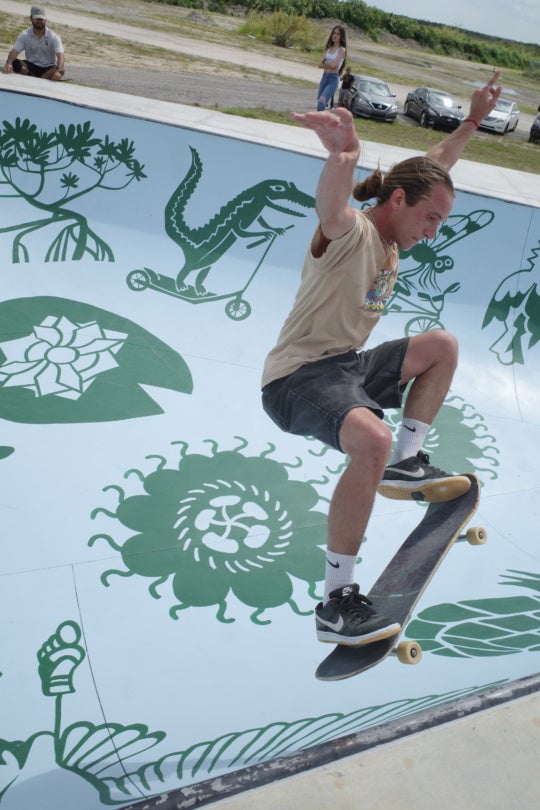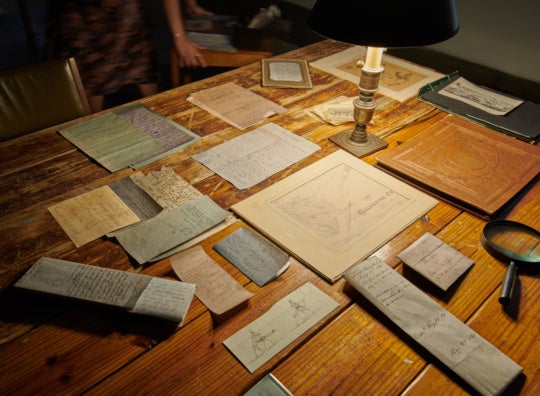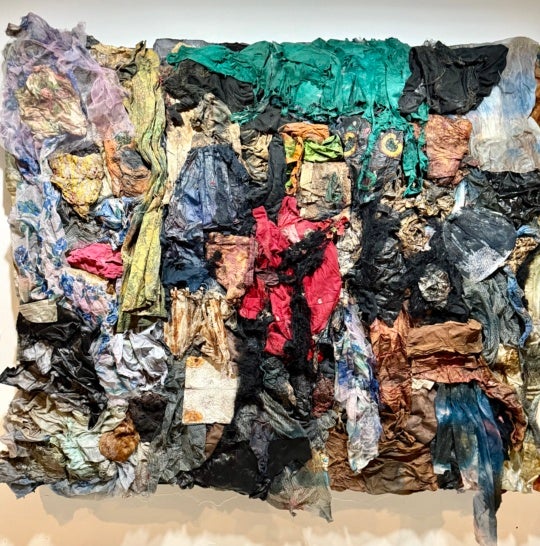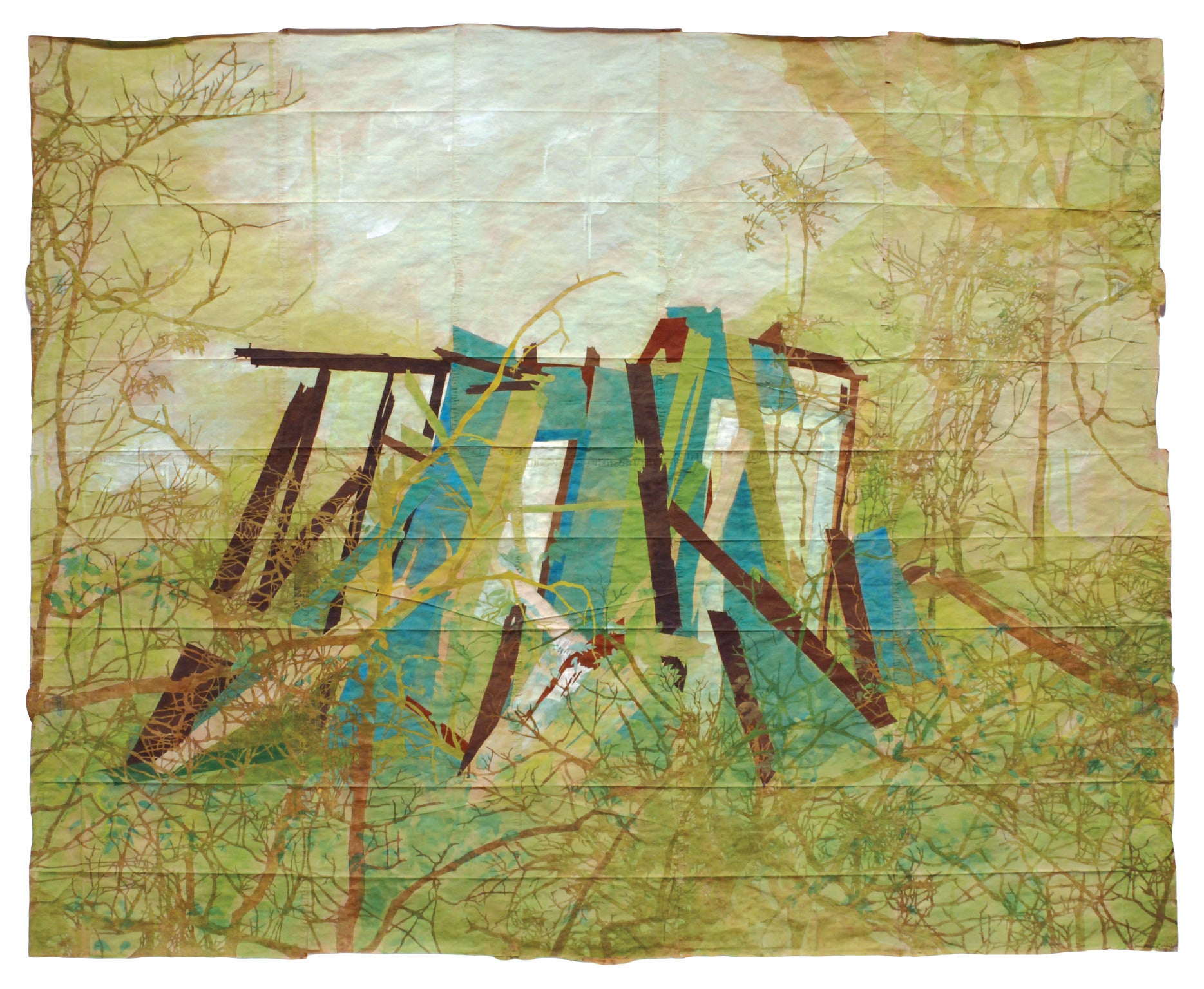
Memphis artist Maysey Craddock portrays relationships between human-manipulated materials and their original natural forms, particularly cycles of use and abandonment involving trees, paper, architecture, and ruin. In “Ruin is a Secret Oasis,” her exhibition on view at the University of Mississippi Museum through July 7, Craddock explores how new life can emerge from decay and demonstrates the resilience of natural beauty.
Craddock’s process reflects her subject matter: she paints the progression from construction to ruin using gouache paint on found paper, which is made from fragments of discarded bags she stitches together. On this repurposed surface, Craddock paints landscapes of ruin inspired by photographs she takes of urban and rural vistas throughout the South. Upon returning to her studio from one of these research trips, Craddock prints a blown-up version of a photograph and then traces it, editing out non-essential components to further distill the image.
This process distances Craddock’s paintings from their photographic source material and allows for the gestures of the artist’s hand to become more visible. In many of her works, the original manufacturing logos remain legible on the paper, further contributing its sense of materiality. Instead fabricating a new visual world, Craddock’s work pulls the viewer’s attention into a conceptual cycle of objects’ use and eventual dereliction.
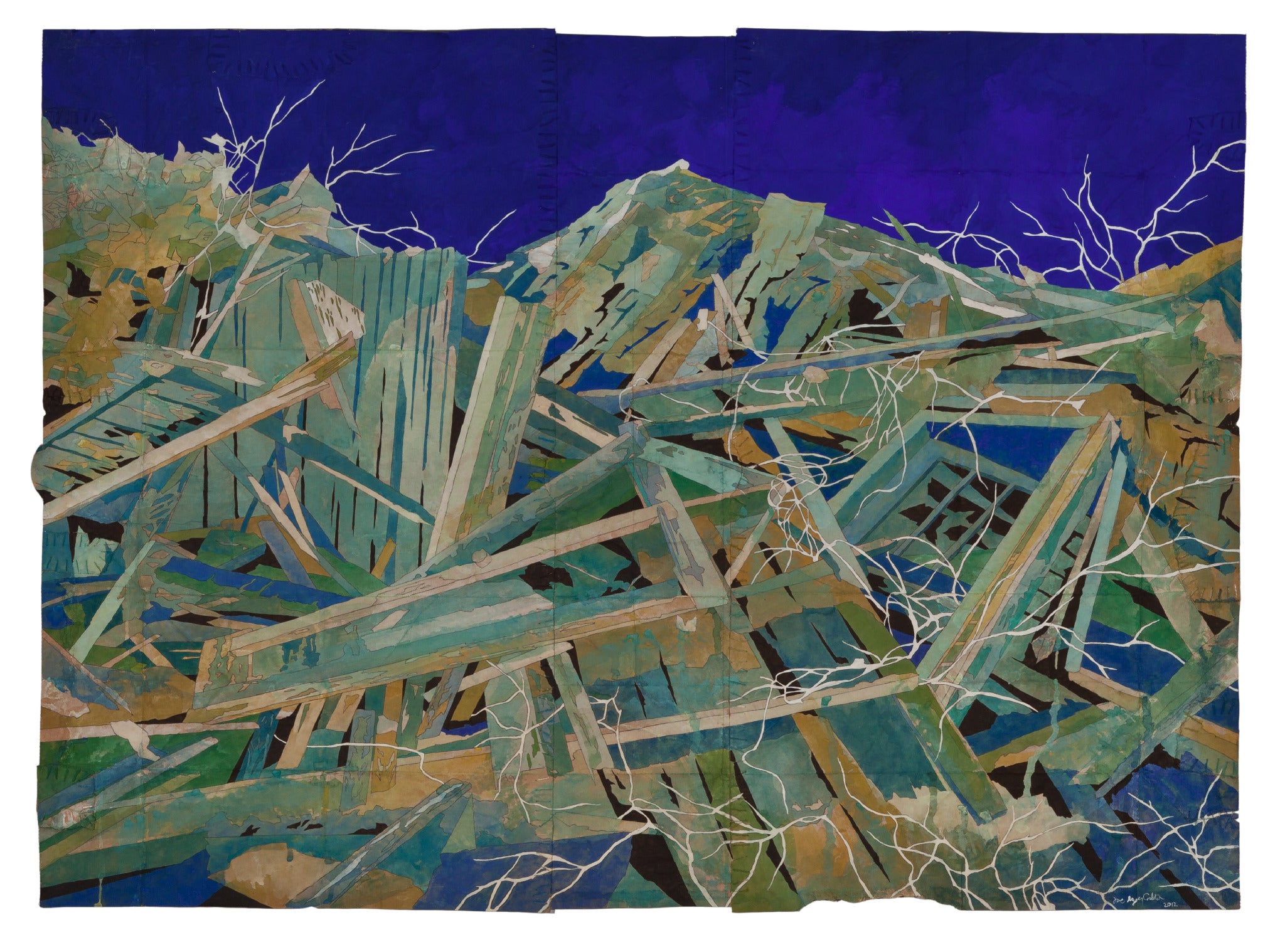
Many of the works in “Ruin is a Secret Oasis” depict dilapidated wooden structures, providing a close marriage between their content and form. Like the ramshackle buildings depicted on its surface, Craddock’s stitched-together paper shows evidence of functional use and the passage of time. The artist‘s work, however, challenges viewers not to see such dilapidation as a burden or failure but rather as an expression of the mutability of nature and the constructed world. In Craddock’s work, depictions of flowers, steel, vines, and timber amalgamate in the same way the disused paper bags are combined to form a surface for painting–to reinvigorate one another and change together.
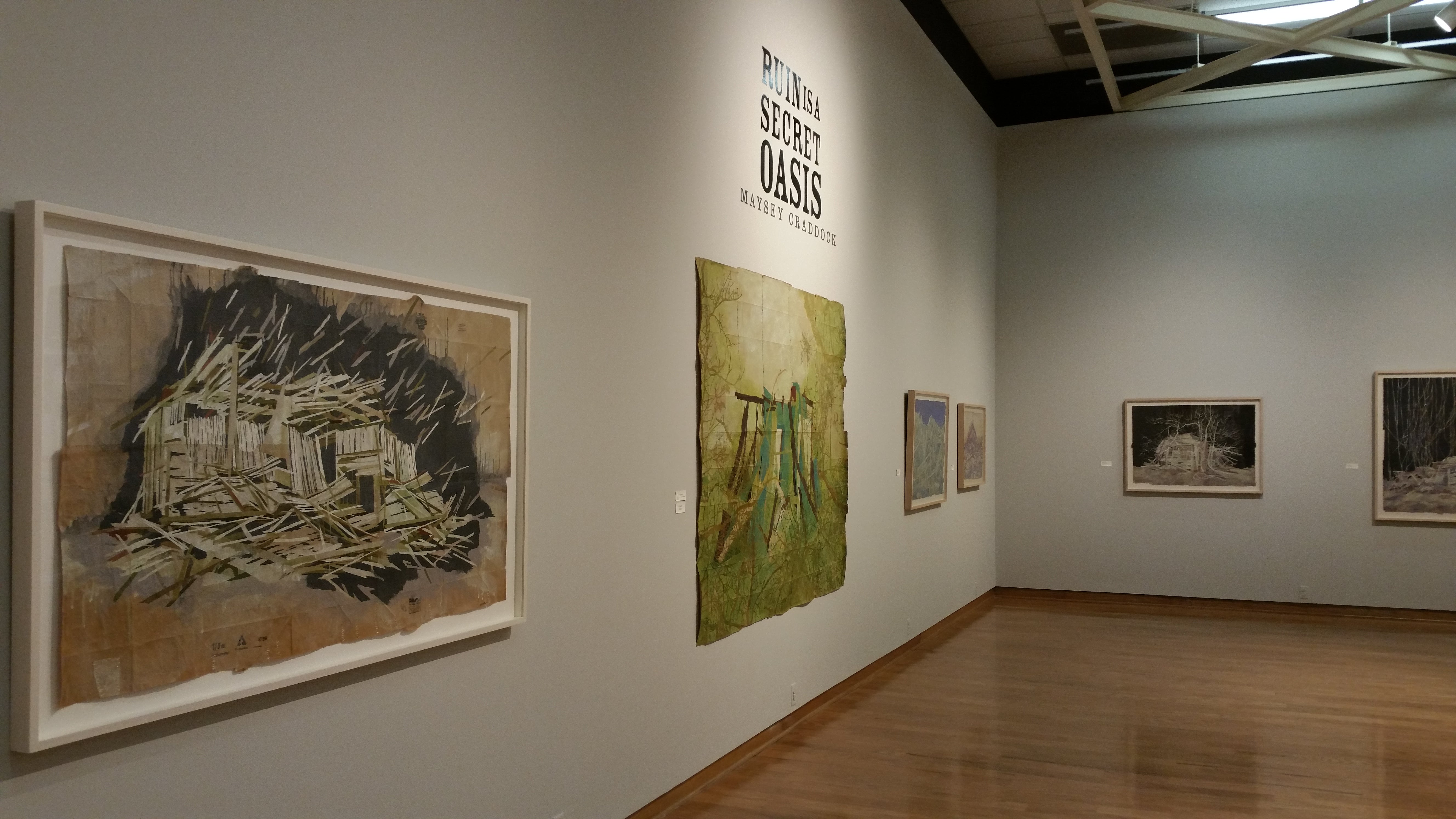
“Ruin is a Secret Oasis” encourages an innovative way of seeing that allows for worn-out bags to become a medium for art and dilapidated structures to be viewed as beautiful. The exhibition also provides a haunting look into our future. None of the works include images of humans or what could be construed as recent traces of human activity, suggesting that someday ruins such as these may be all that is left of humanity. Despite these slightly sinister undertones, an abundant faith in the cycles of life, death, and rebirth imbues Craddock’s work with light and optimism. By removing it from the realm of the new and pristine, “Ruin is a Secret Oasis” instead suggests that beauty is best understood as resilience against the ravages of nature and time.
“Ruin is a Secret Oasis” is on view through July 7 at the University of Mississippi Museum in Oxford, Mississippi. An evening with artist Maysey Craddock takes place at the museum on Thursday, May 3 at 5:30 pm.
Jacqueline Knirnschild is an undergraduate student at the University of Mississippi studying anthropology and Chinese. She is the co-founder and co-editor-in-chief of SharpOxford, and her writing has been appeared in Number: Inc, The Oxford Eagle, The Daily Mississippian and The Winona Times.

